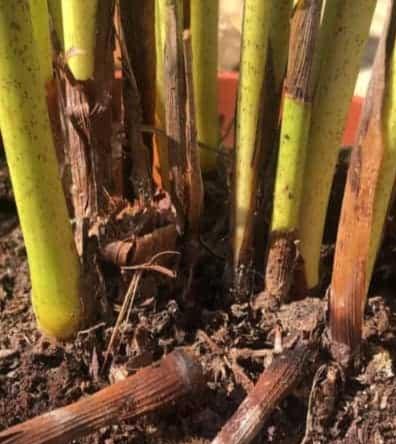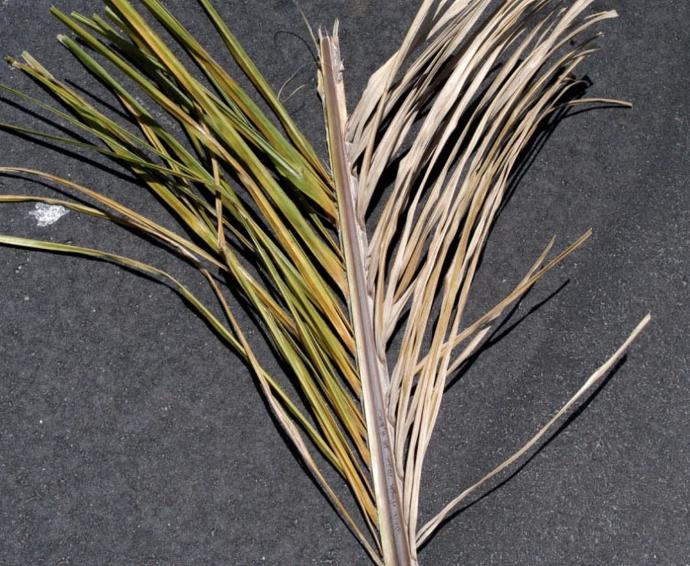Areca Plant
ARECA PALM, also known as Butterfly Palm, is a popular indoor palm. It prefers bright, indirect light and well-draining soil. Keep the soil consistently moist but not waterlogged. Regularly mist the leaves to provide humidity, and fertilize during the growing season.
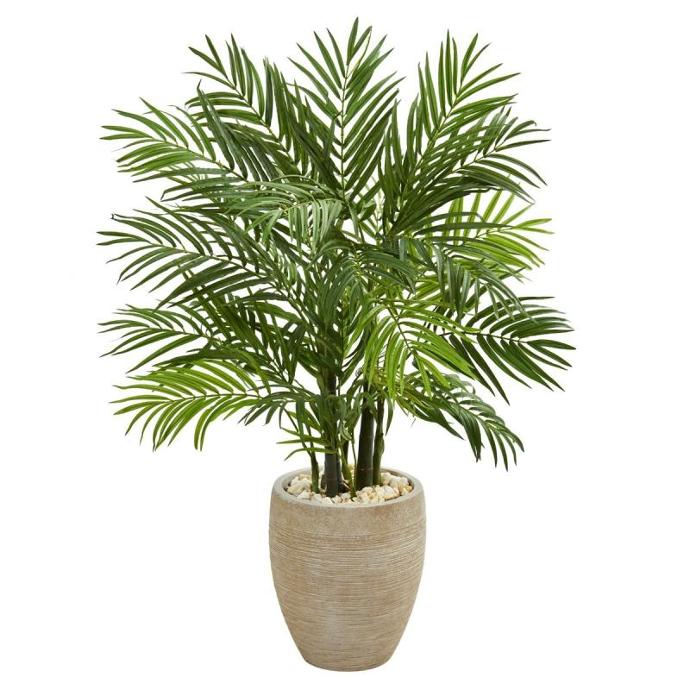
Habit
Tree
Height
1.5-3 m
Growth
Moderate
Soil
Well-drained, fertile soil
Shade
Bright , indirect light
Moisture
Moist
Edible
No
Medicinal
No
Origin
Madagascar
Climatic Condition
Tropical
Temperature (°)
18-24°C
Humidity (%)
60-80%
Potting media
Peat-based mix
Fertilizers
Balanced NPK
Watering
Keep soil consistently moist
Plant Weight
5-10 kg
Flowering Time
Rarely flowers indoors
Soil Ph level
6.0 - 6.5
Water Ph level
6.0 - 7.0
Soil EC
Medium
Yield Per Plant
4.5 to 30 kg per year
NPK ratio
12:12:12
life Span
10+ years
Health Benefits
Suggested Grow Media or Potting Mix ?
50% peat moss, 25% perlite, 25% sand
Suggested Fertigation/Fertilizers
Fertilize every 2-3 months with a palm-specific fertilizer.
Common Diseases and Remedies
Fusarium wilt, root rot.
Yellowing, wilting and death of fronds starting from the bottom and collapse of the entire plant.
Ensure well draining soil, avoid over watering, improve soil drainage.
HEALTH BENEFITS
1. Air Purification: Removes toxins like formaldehyde, xylene, and toluene from the air. Helps improve indoor air quality by filtering pollutants.
2. Increases Humidity: Acts as a natural humidifier by releasing moisture into the air. Helps prevent dry skin, throat irritation, and respiratory issues, especially in dry climates or during winter.
3. Enhances Oxygen Levels: Produces oxygen while absorbing carbon dioxide, making indoor air fresher.
4. Reduces Stress & Boosts Mood: Greenery has been shown to promote relaxation and reduce stress. Creates a calming effect, improving mental well-being and focus.
5. Low Maintenance & Pet-Friendly: Easy to care for and safe for pets, unlike some houseplants that are toxic to cats and dogs.
What Is An Areca Palm Tree?
Areca palms (Dypsis lutescens), also known as butterfly palms, yellow palms, and golden sugarcane palms, are popular indoor and outdoor plants. It comes from Madagascar and is characterized by its feathery, arch-shaped leaves. Areca palm is often used as an ornamental plant in homes, offices, and public spaces due to its elegant appearance and air purifying properties. It prefers bright, indirect light and well-drained soil, and requires regular watering to keep the soil moist.
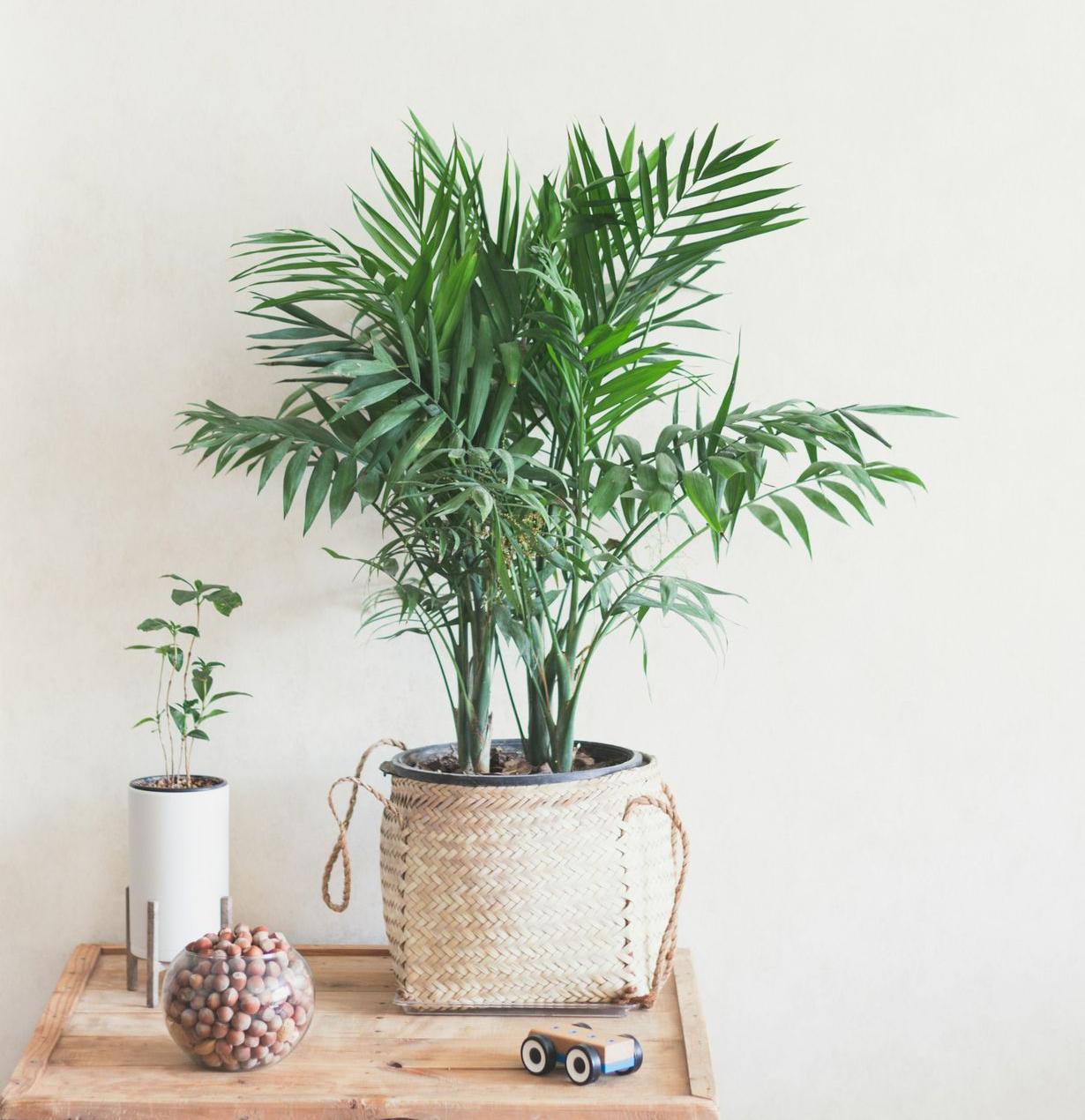
What Are The Different Types Of Areca Palm Plants?
1. Dypsis lutescens
Also known as the butterfly palm, yellow palm, or golden cane palm, it is the most commonly grown type of areca palm. It is characterized by a slender, smooth yellow-green trunk and pinnate, arch-shaped leaves.
2. Dypsis decaryi
Also known as the triangular palm, this species is characterized by its triangular trunk and fan-shaped leaves. Native to Madagascar, it is often grown as an ornamental plant in tropical and subtropical gardens.
3. Dypsis baronii
Also known as the Baron palm, this species is native to Madagascar and is characterized by its slender, smooth green trunk and feathery, arched leaves. It is commonly grown as an ornamental plant in tropical and subtropical gardens.
4. Dypsis pembana
This species, also known as the pembana palm, is from Madagascar and is characterized by its slender, smooth green trunk and feathery, arched leaves. It is commonly grown as an ornamental plant in tropical and subtropical gardens.
5. Dypsis madagascariensis
Also known as the Madagascar palm, this species comes from Madagascar and is characterized by its narrow, smooth green trunk and feathery, arched leaves. It is commonly grown as an ornamental plant in tropical and subtropical gardens.
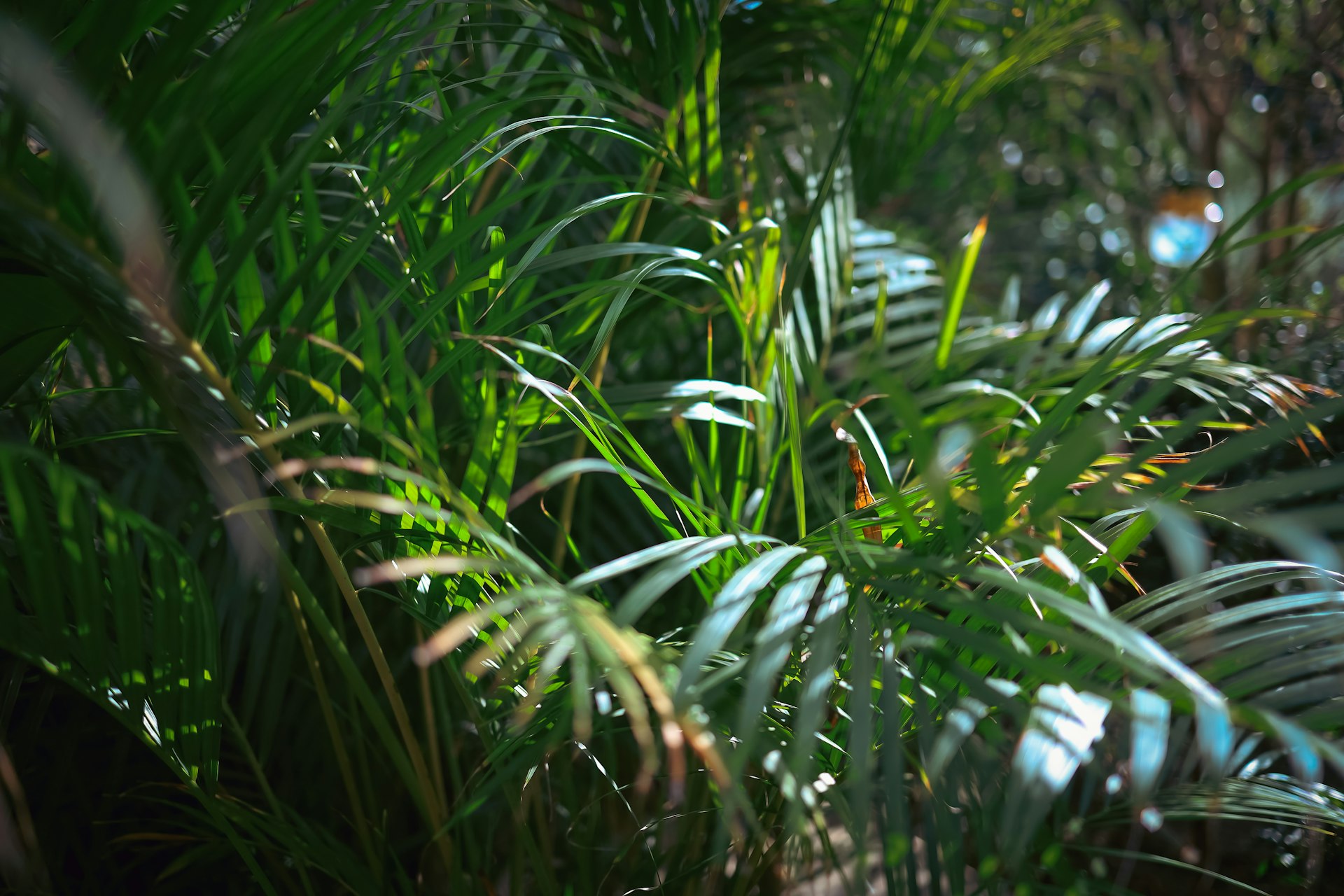
How to Care Areca Palm Plants ?
1. Location
Areca palm (Dypsis lutescens) is native to Madagascar and grows in tropical and subtropical climates. It is often grown outdoors in areas with high temperatures and humidity, such as parts of Florida, Hawaii, and California. In these areas, areca palms can be planted in the ground and can reach up to 20 feet (6 meters) in height. If you live in a cold climate, you can still grow areca palms indoors as a houseplant. Prefers bright indirect light and temperatures between 18°C and 24°C. It is important to keep the plant away from drafts and cold, as it is sensitive to cold and can be damaged at temperatures below 10°C.
2. Sunshine
Areca palm (Dypsis lutescens) prefers bright, indirect light. It can tolerate some direct sunlight, especially in the morning and evening, but too much direct sunlight can cause leaf burn. If you are growing your areca palm indoors, place it near a window that receives plenty of direct sunlight. If growing outdoors, choose a location that provides partial shade, especially during the hottest parts of the day. Overall, it is important to provide bright, indirect light to your areca palm so that it can grow.
3. Soil
Areca palm (Dypsis lutescens) prefers well-drained soil that is rich in organic matter. A suitable potting mix for areca palms is a combination of peat moss, perlite and sand. This type of soil retains moisture and drains excess water, preventing the roots from becoming soggy. It's also a good idea to add a slow-release fertilizer to the soil to provide the nutrients your plants need for growth. Overall, the key is to provide well-drained, organic-rich soil for your areca palm to grow.
4. Hydration
The areca palm (Dypsis lutescens) likes to be kept constantly moist, but does not like being in water. Water the areca palm when the soil surface is dry. Water thoroughly until water comes out from the bottom of the pot. Drain any excess water in the saucer at the bottom of the pot to prevent the roots from staying in the water. It is also recommended to mist the Areca palm leaves regularly to increase the humidity around the plant. Overall, the key is to water your areca palm regularly and evenly so it can grow.
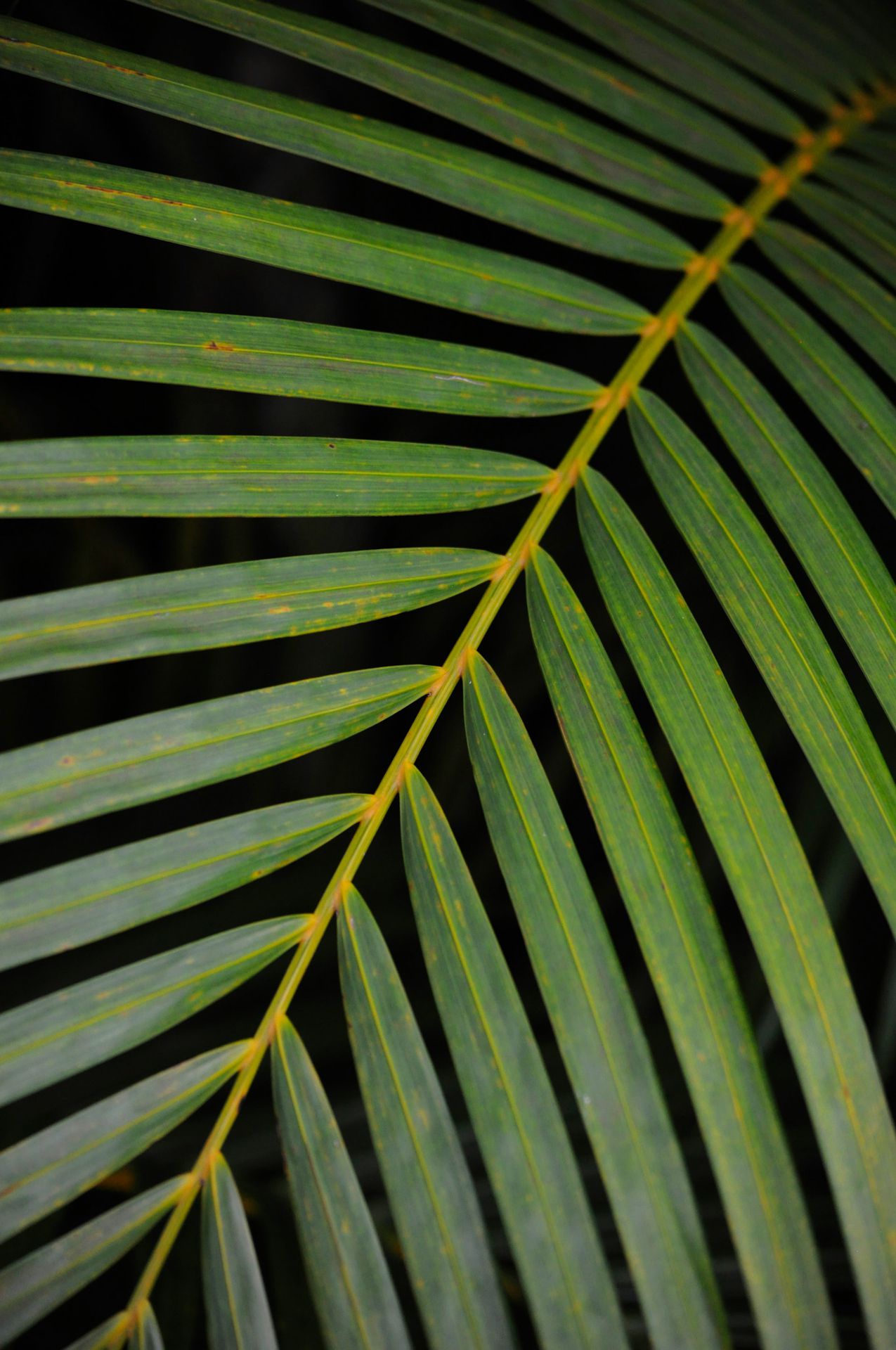
5. Nourishment
Areca palm (Dypsis lutescens) benefits from regular fertilization during the growing season (spring and summer). Use a balanced water-soluble fertilizer and dilute to half concentration before applying to plants. Fertilize your areca palm every 4 to 6 weeks during the growing season. He also recommends repotting areca palms every two to three years to refresh the soil and give the plants more room to grow. Choose a pot slightly larger than the current pot and use potting soil with good drainage. Overall, the key is to fertilize and repot your areca palm regularly to keep it growing.
6. Issues
Areca palms (Dypsis lutescens) are relatively easy to care for, but some problems can still occur. Common problems and solutions include: yellowing of can be caused by overwatering, underwatering, or lack of light. Adjust your watering schedule to ensure your plants receive plenty of indirect sunlight. Brown leaf tips is usually a sign of low humidity. Mist your plants regularly or keep a humidifier nearby. Root rot can occur if the plant is overwatered or the soil is poorly drained. Make sure the pot has drainage holes and adjust your watering schedule. Areca palms may be susceptible to spider mites, scale insects, and mealybugs. Treat the infestation with insecticidal soap or neem oil. If your plant's leaves turn yellow or blue, it may be lacking in nutrients. Feed your plants regularly with a balanced, water-soluble fertilizer. Leaf Spot is a fungal disease can cause brown spots on the leaves. Remove affected leaves and treat the plant with a fungicide. Areca palm is sensitive to cold. If you live in a cold climate, bring your plants indoors for the winter. Addressing these problems promptly will help keep your Areca palm healthy and thriving.
What are the Benefits of Areca Palm ?
Areca palm (Dypsis lutescens) offers several benefits, both as an ornamental plant and potential health benefits: Like many other houseplants, areca palm helps improve indoor air quality by removing toxins such as: As formaldehyde, benzene, and trichlorethylene in the air. Areca palm releases moisture into the air through a process called transpiration, which helps increase the humidity in your home. With its feathery, arching leaves and slender, smooth trunk, areca palms are a popular choice for adding tropical beauty to indoor and outdoor spaces. Research shows that spending time near plants such as areca palm reduces stress and improves mood. Some studies suggest that areca palm may have medicinal properties, including anti-inflammatory and antioxidant properties. However, further research is needed to confirm these potential health benefits. Overall, areca palms are versatile and attractive plants that can improve both the beauty and health of indoor and outdoor spaces.

FAQs About Growing Areca Palms
1. How to maintain areca palm trees ?
Caring for the areca palm (Dypsis lutescens) includes providing the right growing conditions, watering it properly, and pruning it occasionally to maintain its shape. Here are some tips for caring for your areca palm. Areca palms prefer high humidity, so we recommend misting the leaves regularly or keeping a humidifier nearby. You can also place a bowl of water and pebbles under the pot to increase humidity around the plant. Re-pot your areca palm every two to three years to refresh the soil and give the plant room to grow. Choose a pot slightly larger than the current pot and use potting soil with good drainage. By following these care tips, you can keep your areca palm healthy and thriving for years to come.
2. What are the uses of areca palm tree ?
Areca palms are a popular choice for adding tropical beauty to indoor and outdoor spaces. Its feathery, arching leaves and slender, smooth stems make it an attractive addition to gardens, patios, and indoor spaces. Like many other houseplants, areca palm improves indoor air quality by removing toxins such as formaldehyde, benzene, and trichlorethylene from the air. Areca palm releases moisture into the air through a process called transpiration, which helps increase the humidity in your home. Some studies suggest that areca palm may have medicinal properties, including anti-inflammatory and antioxidant properties.
3. Can I grow areca palm indoor ?
Yes, you can grow areca palm (Dypsis lutescens) indoors as a houseplant. Areca palms are popular houseplants because they are relatively easy to care for and tolerate a variety of lighting conditions.
4. Which pot is best for growing areca palm ?
The best pot to grow Areca palm (Dypsis lutescens) is one that is slightly larger than your current pot and has drainage holes. Areca palms prefer well-drained soil. Therefore, it is important to choose a pot with good drainage to prevent the roots from becoming waterlogged. Using a pot with drainage holes allows excess water to drain out the bottom of the pot and prevents the roots from standing in the water. Additionally, using a pot that is slightly larger than your current pot will give your plant more room to grow. Choose pots that are made of durable materials such as plastic or ceramic and match the aesthetics of your home or garden.
5. From where can I shop areca palm tree ?
Areca palm (Dypsis lutescens) can be purchased from a variety of locations including: Nurseries and Garden Centers, Online Retailers, Local Plant Sales and Markets, Plant stores .Before purchasing an Areca palm, research the type of Areca palm you are interested in and make sure it is suitable for your climate and growing conditions.
